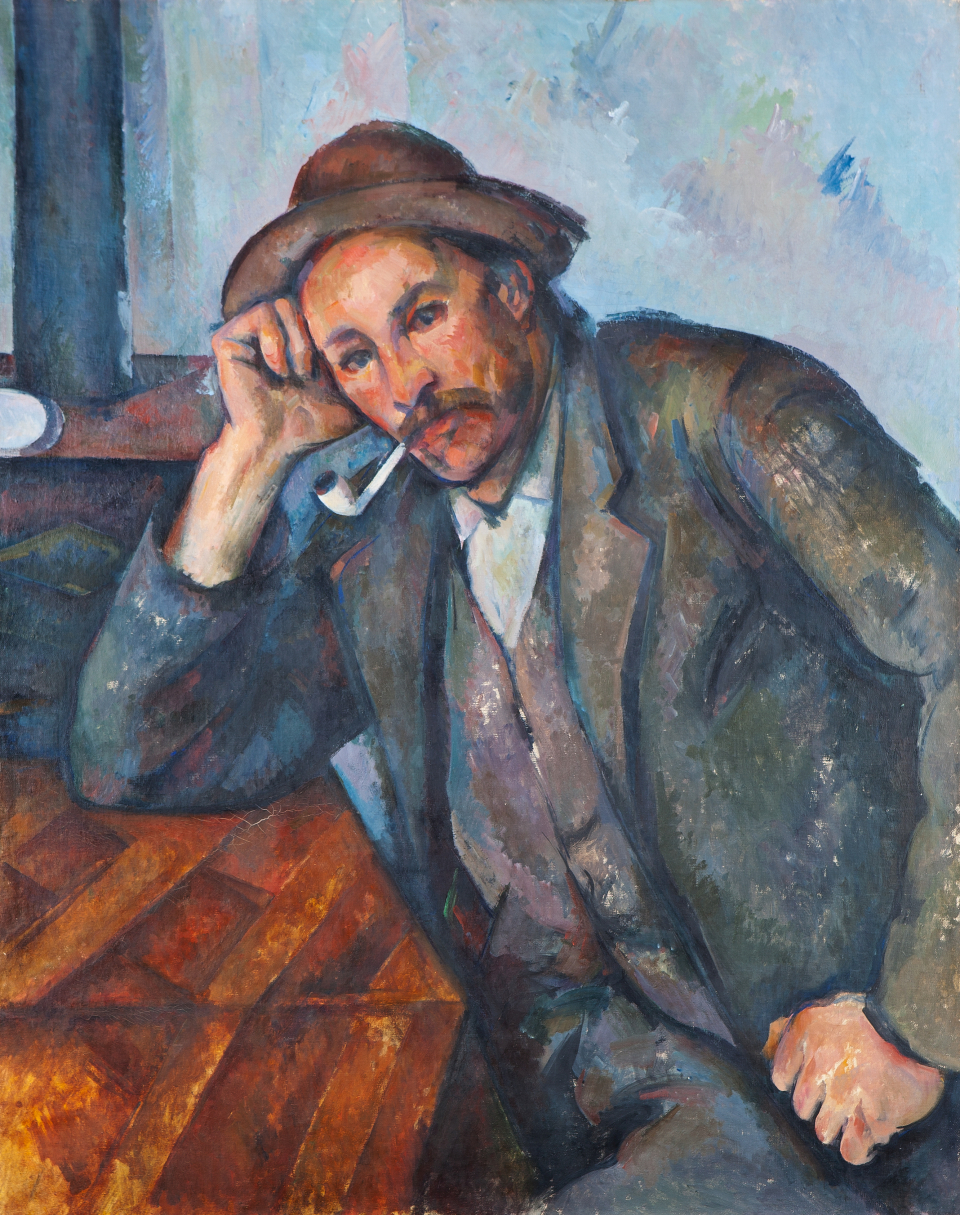Le fumeur accoudé
Hector-Bau > Ebene 1 > Kubus 1
Intro
Paul Cézanne’s pictures of card players and smokers from the 1890s radiate a perceptible sense of calm, bordering on aloofness. His smokers look at us steadfastly, their heads, in a gesture of exhaustion or contemplation, supported on a fist, the pipe in the corner of their mouths a symbol of the end of a day’s work. Between 1890 and 1892 Cézanne painted three versions of the »The Smoker«, whose clothes easily identify him as a worker. He has pushed back his hat and fills most of the pictorial space with his powerful body. This compact physicality lends the figure a tangible presence. Cézanne, one of the pioneers of modern painting, would have an extraordinary influence on successive artists. Developing his own technique, he generated an impression of physicality through the application of a multitude of tiny areas of color and a harmonious play of earthy tones. In the 1880s and 1890s, following an Impressionist phase, he increasingly adopted a concentrated and balanced compositional approach, also evident in this portrait.
Background
With the »Smoker with a Restful Arm«, the Kunsthalle Mannheim possesses a central figure painting from the mature works of Paul Cézanne, who is regarded as the “Father of Modern Painting”. When Fritz Wichert (1878–1951) purchased the work in 1912 from the art dealer Paul Cassirer (1871–1926) in Berlin for the price of 35,000 Reichsmark for the “French Gallery”, he had to defend the acquisition against the hostile comments of the purchasing commission, who spoke disparagingly of the painting as the work of a dilettante. The director of the Kunsthalle pointed out the importance of French art as a role model, and its “great ability to serve as a stimulus”, without implying a lack of “patriotism”.
Between 1890 and 1892, Cézanne painted three variations of a man smoking a pipe and sitting at a table on which he has placed his elbow, a traditional subject which can be traced back to the seventeenth century. The paintings were produced in close conjunction with the series of »Card Players«, in which the same man acted as model. The two versions in the Hermitage in St. Petersburg and the Pushkin Museum in Moscow depict a considerably larger section of the room, which is thereby revealed to be the artist’s studio, because in the background we can see several of Cézanne’s works, shown as pictures within the picture. In the version in the Kunsthalle Mannheim, Cézanne has dispensed with these details; it seems to be the most concentrated version and is a fine example of the artist’s striving for a simplification of form. Here, Cézanne was not concerned with the portrayal of an individual personality, but was rather implementing his strict rules of form and colour. Correspondingly, he reduces the colour palette to shades of brown, grey and blue, heightened by a little ochre and green. The spatial situation does not seem clear because of the two-dimensional geometric elements of the table, so that in his simple, calm and self-assured monumentality, the massive figure of the subject has an even stronger effect than in the other two versions of the picture.
After studying the painting of Gustave Courbet (1819–1877) and Édouard Manet (1832–1883), Cézanne had initially moved in Impressionist circles in Paris. He exhibited his works together with them in 1874 and 1877. Cézanne developed his own pictorial language in series of works in which he repeatedly used the same subject, including the Montagne Sainte-Victoire, a mountain which lays to the south of his home town of Aixen- Provence, and in the field of figure painting with his card players and bathers. Although Cézanne’s colour palette became brighter and he practised »plein air« painting like his fellow-artists, he did not follow them in the breaking-up of objects and contours. Instead, he was primarily interested in a new way of arranging the pictorial space, whereby not only the brushwork in parallel hatching strokes, but also the suspension of classical perspective and the geometricisation and stabilisation of the forms played an important role. It was these compositional features in particular that greatly influenced later generations of artists, such as the Expressionists and the Cubists, since they represented the starting point for their own artistic endeavours.
Kunsthalle Mannheim

